Dau Go Cave is one of Ha Long Bay’s most enchanting natural wonders, attracting visitors with its beauty and legends. Also called the Wooden Stakes Cave, Dau Go Cave features striking rock formations and a unique underground ecosystem. Rich in history, it’s linked to the 13th-century Vietnamese-Yuan Mongolian War. As you venture deeper, you’ll discover a magical world unlike any other. A visit to Dau Go Cave is a must for anyone exploring Ha Long Bay.
Quick Details
Address: Dau Go Island, Ha Long Bay, Ha Long City, Quang Ninh Province, Vietnam.
Timings: 7 AM – 5:30 PM
Entry Fee: VND 50,000 / ₹165 per person
Cave Type: Karst cave in a limestone mountain range
Notable Attractions: Majestic architecture, stunning stalactites and stalagmites, rich flora and fauna
Location

Dau Go Cave is located on Dau Go Island, a part of the famous Hạ Long Bay in Quang Ninh Province, in northern Vietnam. A limestone structure, the cave sits about 13 km from the mainland city of Hạ Long and is easily accessible by boat from various piers in the bay. Featuring stunning formations, Dau Go Cave Vietnam is situated about 6 km from the Bai Chay tourist area and 3 km from Tuan Chau Island. The entrance is about 27 metres above sea level and is 12 metres high and 17 metres wide.
How To Reach

Photo: Hoangkid / Wikimedia Commons
To reach Dau Go Cave Quang Ninh Province, you need to first get to Ha Long Bay and from there you can take a boat ride to the cave.
By Air: The nearest airport to Ha Long Bay is Cat Bi International Airport in Hai Phong. From there, it takes around 2 hours by taxi to reach the bay, where you can board a boat or cruise to explore the caves.
By Road: The easiest way to reach Ha Long Bay is from Hanoi via the Hanoi–Hai Phong Expressway. You can travel by bus or private car, with the journey taking about 2.5 to 3 hours through scenic landscapes.
By Rail: Ha Long Railway Station is nearby, but train services are no longer operational. Travelling by train to Hanoi and then transferring to Ha Long is time-consuming, so it’s best avoided.
Things To Do In Dau Go Cave
The caves present you with a hoard of activities that are guaranteed to make your time more memorable. Here are some Dau Go Cave activities to enhance your experience.
1. Explore The Flora And Fauna

Formed around 2 million years ago during the late Pleistocene period, Dau Go Cave is approx. 5,000 square metres in size and shares its origins with Thien Cung Cave. Besides the immense size, the cave boasts a rich flora and fauna system that is the result of the high humidity levels down there. As you go deeper into the cave, you will come across rare swallows, mosses, ferns, and various woody plants.
2. Observe The Unique Structure Inside
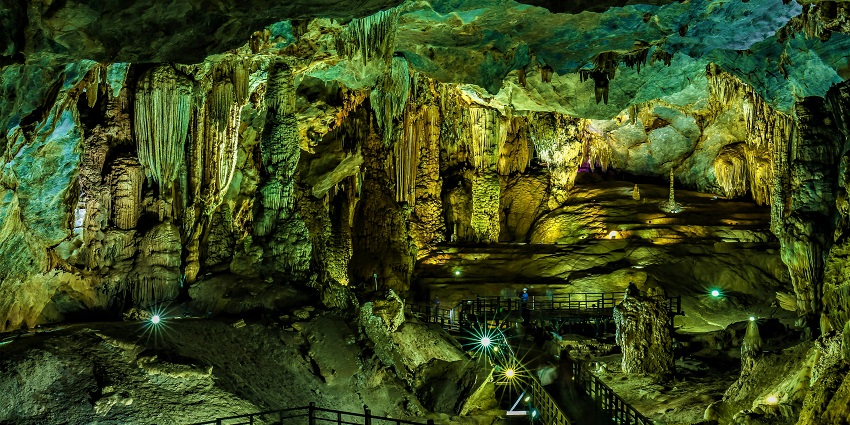
Besides the grand entrance, the cave is divided into three compartments, each of which is unique in its way. The first chamber boasts a high domed ceiling adorned with colourful stalactites and stalagmites, while the second chamber is more mysterious and has sparkling rock formations. The third chamber expands into a vast space that looks like an empty battlefield and features warriors on horseback, weapons clashing, and a chaotic battle frozen in time. At the end of the chamber, you will find a small stream of water.
3. Enjoy A Seaplane Tour
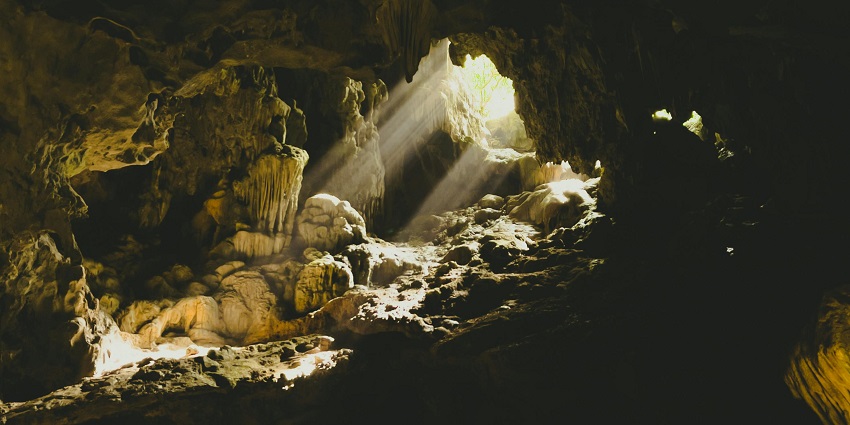
Photo: Le Thanh Huyen / Pexels / Image For Representation Only
For an unforgettable adventure, take a seaplane tour over Dau Go Cave and Ha Long Bay. With a scenic flight, you can enjoy breathtaking views of the emerald waters, stunning limestone formations, and lush islands scattered across the bay. The flight provides a bird’s-eye perspective of the impressive entrance of the cave, making it a unique way to appreciate its beauty. After landing near the cave, you can step inside to feel the cool, misty atmosphere and admire the intricate rock formations.
4. Read Stele’s Praise Poem
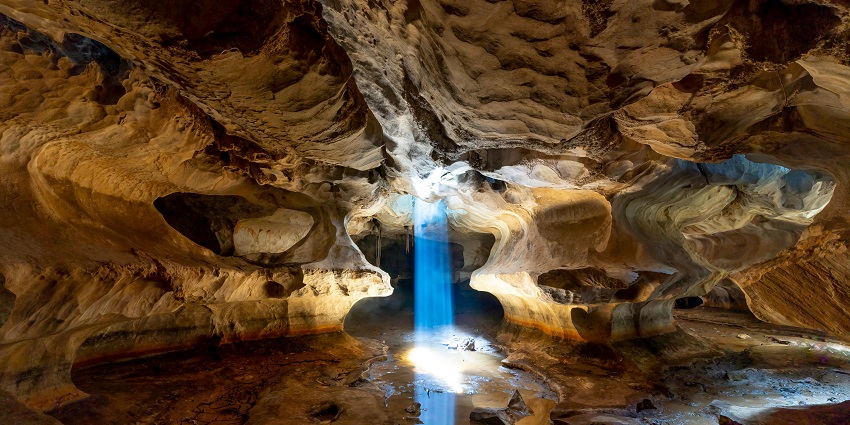
Photo: Quang Nguyen Vinh / Pexels / Image For Representation Only
Another highlight of Dau Go Cave is a stone stele that features a poem by Emperor Khai Dinh. A must-see for visitors, the poem is written in elegant calligraphy that describes the breathtaking stalagmites and stalactites inside the cave. More than just a literary work, the poem captures the cultural significance and grandeur of the site. Though it was composed in the early 20th century, it remains a cultural treasure today.
Places To Visit Around Dau Go Cave
When visiting Dau Go Cave, don’t pass on these beautiful attractions that are located only a few kilometres away.
1. Game Cock Islet
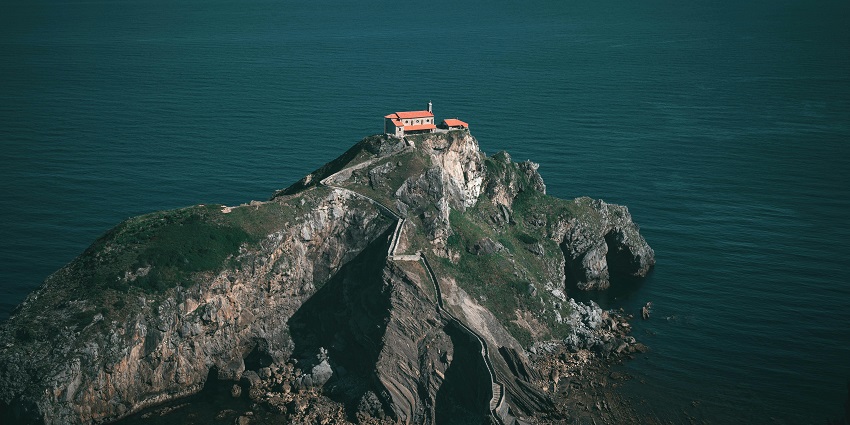
Photo: Narcisa Staicu / Pexels / Image For Representation Only
Located only 2 km away from Dau Go Cave, Game Cock Islet is one of the most iconic rock formations in Ha Long Bay. Also known as Hon Ga Choi, the two limestone islets rise from the emerald waters and look like a pair of roosters facing each other. For the best view, visit the islet during sunrise or sunset when the rocks are illuminated and look stunning.
Distance From Dau Go Cave: 2 km
Timings: 6:30 AM – 6:30 PM
2. Bai Tho Mountain

Photo: Karolina / Pexels / Image For Representation Only
A famous viewpoint, Bai Tho Mountain offers breathtaking views of Ha Long Bay. The mountain is about 200 meters high and is the perfect spot for hikers. When climbing your way to the top, you will see ancient poems carved into the rocks written by Vietnamese kings centuries ago. It is because of this reason, the mountain is also called the Poem Mountain.
Distance From Dau Go Cave: 18.7 km
Timings: 24 hours
3. Sung Sot Cave
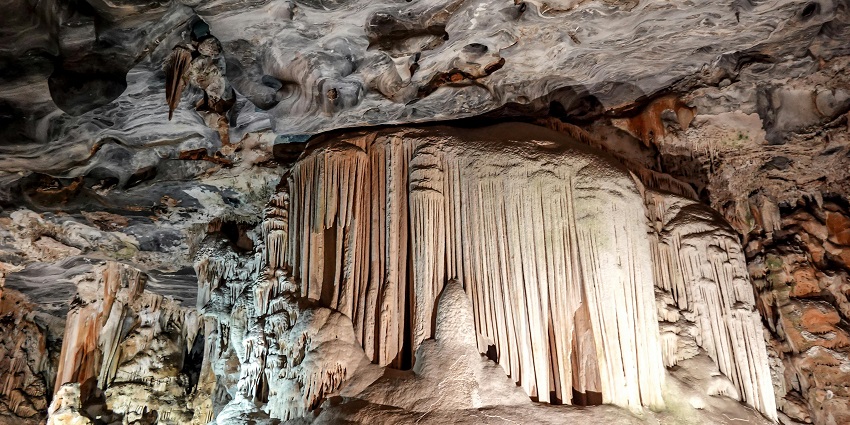
Photo: Magda Ehlers / Pexels / Image For Representation Only
Another impressive cave in Halong Bay is Sung Sot Cave that is famous for its vast chambers and beautiful limestone formations. Located on Bo Hon Island, the cave covers a large area and features two main sections adorned with stalactites and stalagmites. To reach the entrance, you need to hike up a few stone steps, but the effort is worth it. The cave is well-lit and highlights the rock formations that resemble animals and mythical creatures.
Distance From Dau Go Cave: 8 km
Timings: 8 AM – 6 PM
Where To Stay

Photo: Max Vakhtbovycn / Pexels / Image For Representation Only
When it comes to choosing accommodation near Dau Go Cave, you will find many suitable options in Ha Long City. From hotels to resorts, there’s something for every budget. Some of the top choices include Swan Motel, Sochu House, and Tuan Chau Resort Ha Long. Staying at one of these accommodations makes it easier to reach the cave.
Where To Eat

Photo: Markus Winkler / Unsplash / Image For Representation Only
You will find a variety of restaurants and cafes near Dau Go Cave, where they serve both traditional and international cuisines. Whether you want to have a full-course meal or grab a snack, you can go to Bayview Restaurant, Linh Dan Restaurant, or Nha Hang Hoai Thu 2. These are among the top-rated eateries out there.
Best Time To Visit
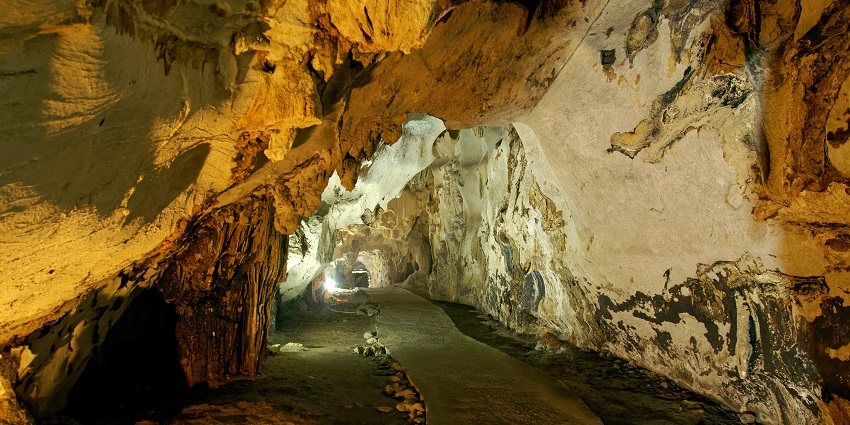
Photo: Jakub Hałun / Wikimedia Commons / Image For Representation Only
The best time to visit Dau Go Cave is between October and April when the weather is cooler, drier, and more comfortable. During this time, the skies are clear and the sea is calm, making it perfect for exploring and enjoying boat trips to the cave. For the best experience, you should visit the cave early morning or late afternoon as it allows you to enjoy the cave’s stunning rock formations in a peaceful setting.
Tips For Travellers

Photo: Precondo / Pixabay / Image For Representation Only
Here are some tips to remember when planning a trip to Dau Go Cave:
- Use GPS and note down Dau Go Cave’s address for easy navigation.
- Check Dau Go Cave timings before your visit to avoid delays.
- Set aside at least 2 – 3 hours to explore the cave properly.
- Apply mosquito repellent before entering the cave.
- Fully charge your phone and camera to capture the beauty inside.
If you’re visiting Ha Long Bay, don’t miss Dau Go Cave. With its striking rock formations, calm atmosphere, and interesting history, it’s a great spot to explore during your Vietnam trip. The cave offers a quiet break from busy spots and is ideal for nature lovers. Add it to your itinerary and book your trip with TripXL today.
Cover Photo: Jakub Hałun / Wikimedia Commons / Image For Representation Only


 WhatsApp
WhatsApp
 Twitter
Twitter









